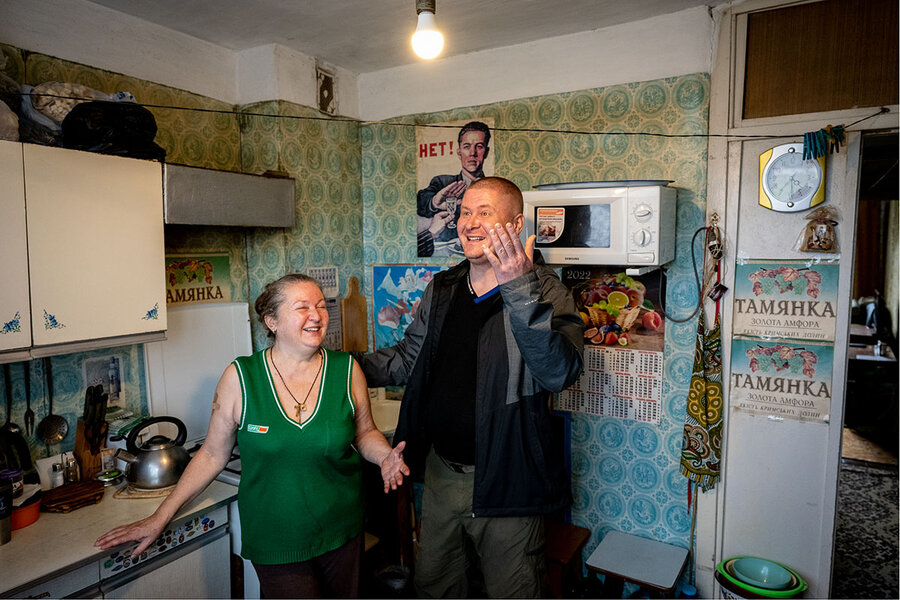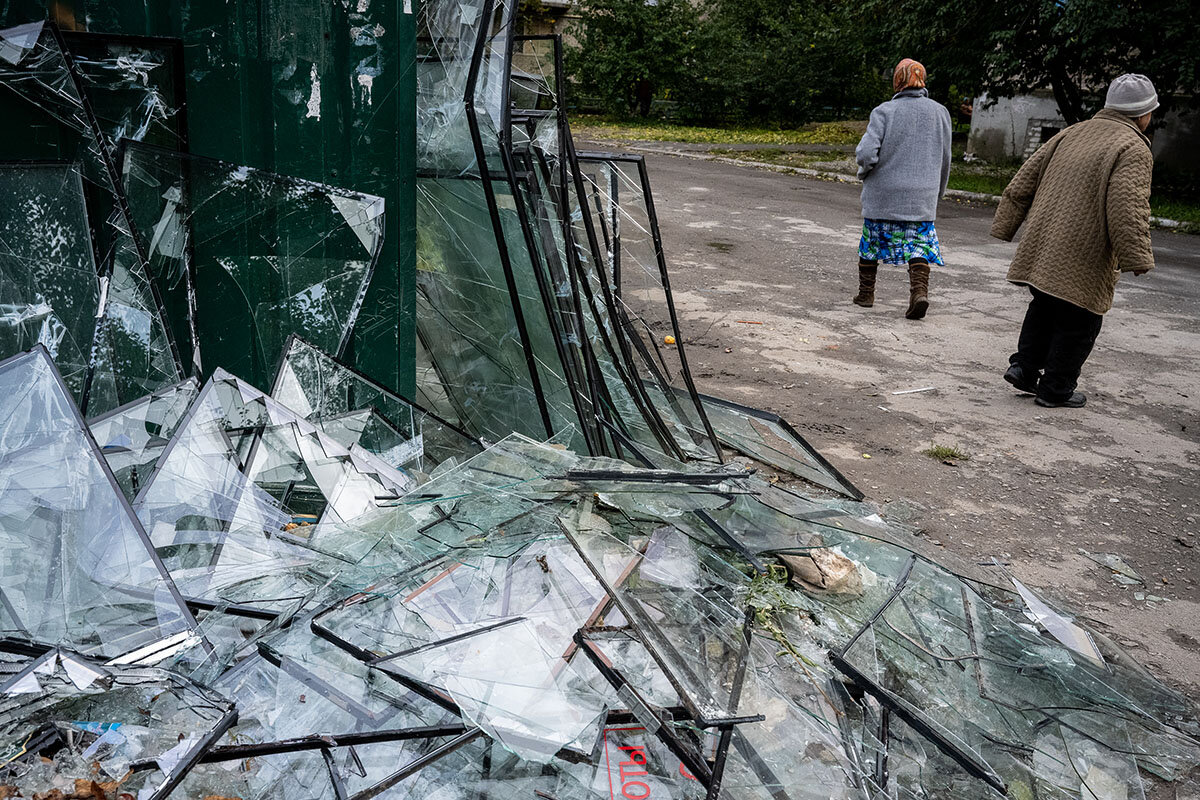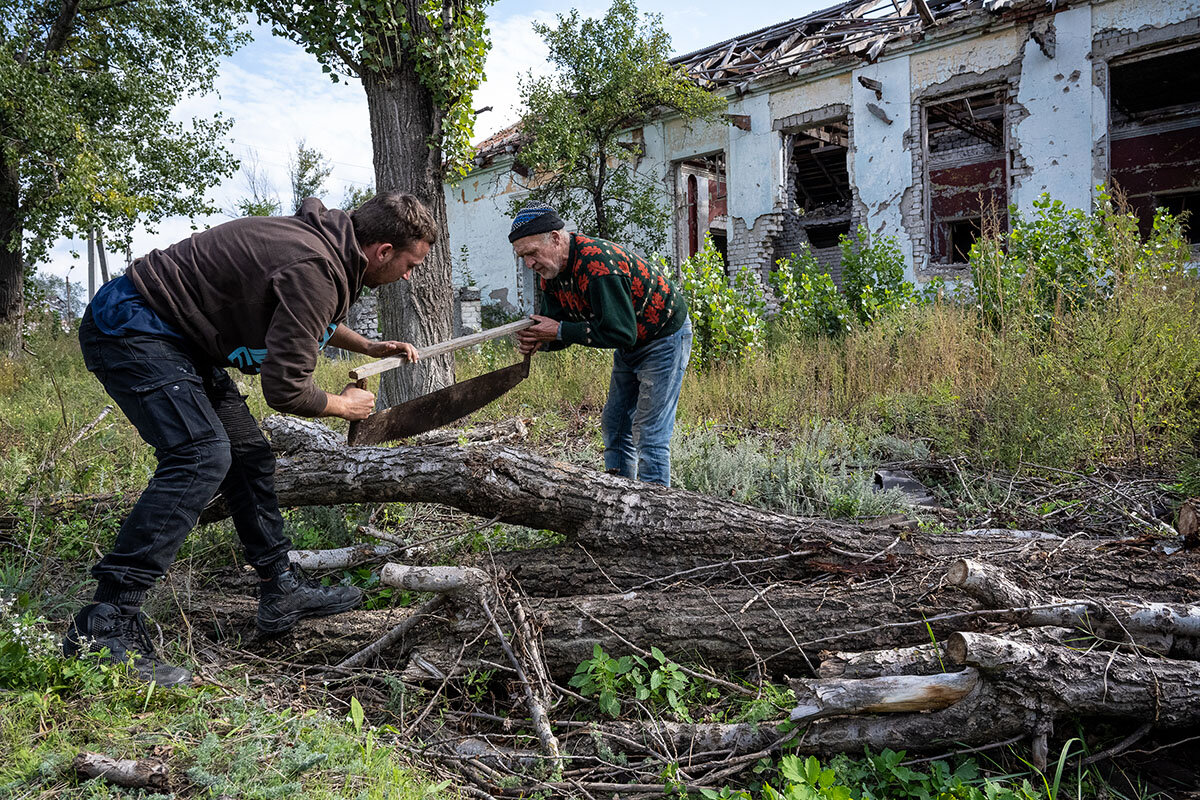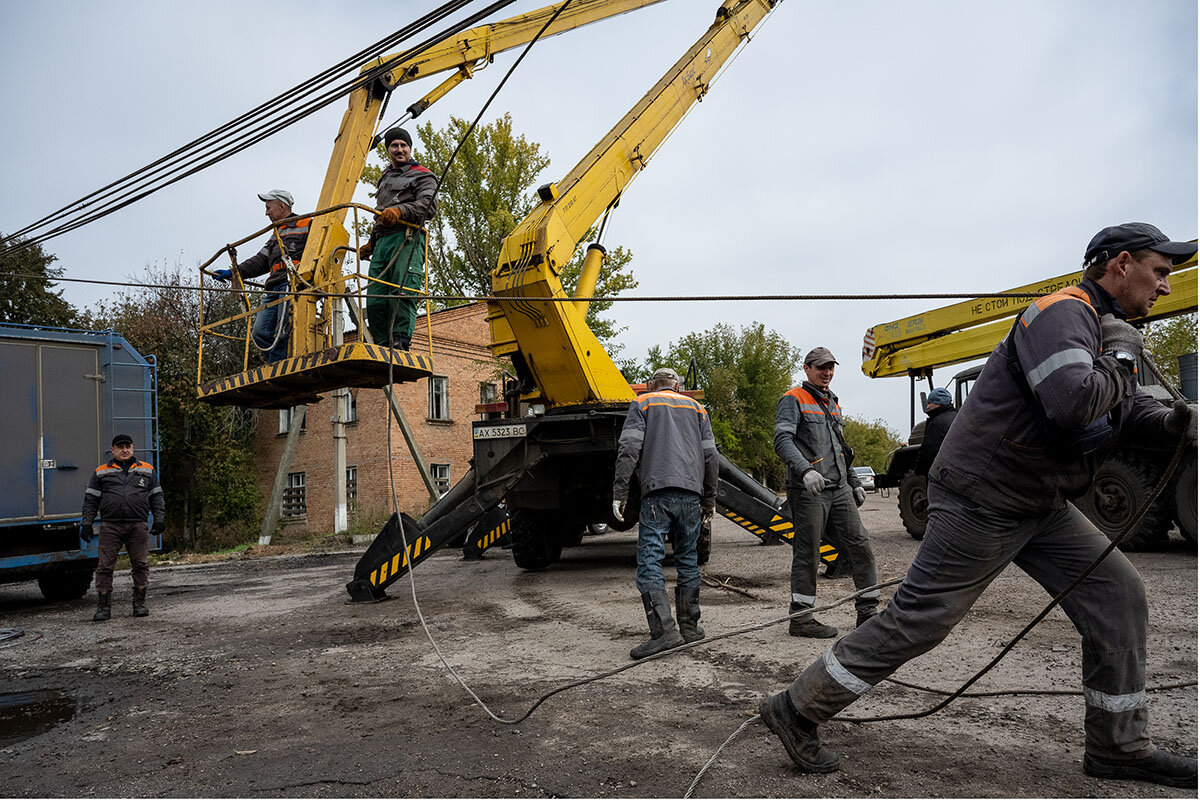‘Electricity is civilization’: Winter looms over Ukraine battlefront
Loading...
| Balakliia and Kharkiv, Ukraine
Although a lack of power might have been a novel inconvenience during the warm summer season, it is increasingly a matter of great urgency for Ukrainian citizens and officials.
Coping with winter with any degree of security will require perseverance, as the looming season is being weaponized in a Russian bid to compensate for battlefield losses. Recent Russian attacks have specifically targeted Ukraine’s electrical and other civilian infrastructure – with the apparent aim of making this winter as hard as possible.
Why We Wrote This
A story focused onAmong those things governments strive to provide are security, opportunity, and minimal comfort. With winter approaching, and Russia targeting Ukraine’s infrastructure, add to that list heat and light. It’s requiring a concerted effort.
Emblematic of the challenge is the one facing the Kharkiv region, where Ukraine recaptured more than 3,000 square miles in September, and officials seek to ensure habitable conditions for a growing number of survivors. Across the region, as teams work to restore electricity, Ukrainians are stockpiling as much wood, fuel, and food as possible.
Electricity is the top priority, because that often restarts running water, too, says Serhii Mahdysyuk, the Kharkiv regional director in charge of housing, services, fuel, and energy. “Of course, we have this race against time,” he says.
“Everyone is worrying about the winter,” says retiree Raisa Kablova, a day after celebrating the return of both power and water. Without electricity and central heating, she says, “if it is below freezing outside, it is the same in the apartment.”
On the freshly liberated battlefields of northeast Ukraine, a pile of smashed glass windows outside one Soviet-era block of apartments attests to the violence of six months of Russian occupation, and of Ukraine’s sweeping recent military advances.
Indoors, in cramped apartments, residents lived in the dark for weeks on end.
Now, with a hard winter looming, they marvel at the speed and urgency with which Ukrainian officials have restored another key ingredient to their survival: electric power.
Why We Wrote This
A story focused onAmong those things governments strive to provide are security, opportunity, and minimal comfort. With winter approaching, and Russia targeting Ukraine’s infrastructure, add to that list heat and light. It’s requiring a concerted effort.
“Thank God it works! Electricity is civilization – it is everything,” says Antonina Krasnokutska, a retired medical worker, looking affectionately at the lightbulb that came on the day before, and now burns again in her tiny spotless kitchen.
“Without electricity there is no TV, no news, no clothes washing, no charging the phone,” says Ms. Krasnokutska, her gray hair pulled back and a small crucifix around her neck.
“Before, it was like living in the Stone Age,” says her grown son, Serhii Krasnokutskyi, who is more than a head taller. “As soon as it got dark, everyone would go to sleep.”
He shows a picture on his phone from a few days earlier, of a tangle of phone and computer charging cables – including his – plugged in at a local shop with a generator.
“We are very grateful for the people who repaired this electricity, even with shelling continuing,” he says. “They have a very complicated job.”
Indeed, although a lack of power might have been a novel inconvenience during the warm summer season, it increasingly has become a matter of great urgency for Ukrainian citizens and officials.
Coping through Ukraine’s winter with dignity and any degree of security will require courage and perseverance, as the severity and suffering that the season can bring here are being weaponized by Russia, as it seeks to compensate for a string of battlefield losses.
In recent days, Russian attacks have specifically targeted Ukraine’s electrical and other civilian infrastructure – all with the apparent aim of making this winter as hard as possible for Ukrainians, even as Moscow employs other measures to spread the hardship across Europe.
Ukrainian President Volodymyr Zelenskyy said Monday that Russian barrages across the country with missiles and Iran-supplied kamikaze drones had destroyed 30% of Ukraine’s power stations in the previous eight days. Thousands of towns have been left without electricity.
Kharkiv’s challenges
Emblematic of the national challenge is the one facing officials in the northeast Kharkiv region, where Ukraine recaptured more than 3,000 square miles in a September counteroffensive. Ukrainian forces are still making gains on that front, as well as in the south toward Kherson, where Wednesday Russia started evacuating civilians from the first major city it occupied, after launching its three-pronged invasion last February.
Across the Kharkiv region, Ukrainians are stockpiling as much wood, fuel, and food as possible while they still can, from sources as diverse as the floorboards of destroyed schools and the pine forests in Izium, which are pockmarked with abandoned Russian trenches adjacent to a mass burial site.
“Of course, we have this race against time,” says Serhii Mahdysyuk, the Kharkiv regional director in charge of housing, services, fuel, and energy. “Unfortunately, we probably stand in front of the biggest challenge in Ukraine.”
That is not only because of the scale of liberated territory, he says, but also because the Kharkiv region shares a long border with Russia, as well as with the Russian-controlled areas of the eastern Donbas.
“It’s a great mixture of all threats, and we are sure that shelling and bombings will continue, but we are ready for this,” says Mr. Mahdysyuk. “We know our weak spots that Russia can destroy, but we are prepared for what to do in these situations.”
Ukraine’s battlefield gains have meant a surging need to pick up the pieces after Russian occupation, to ensure habitable conditions as more and more surviving residents require services, and as others return to scenes of devastation.
Restoring electricity is the top priority, because that often restarts running water, too, says Mr. Mahdysyuk. But before that, the area beneath broken power lines must be de-mined.
Indeed, members of an electricity team reconnecting cables on the outskirts of Balakliia – one of the first towns to see power restored, at the end of September – say they lost two fellow workers in the previous two weeks. One died after stepping on an anti-personnel mine, another when his vehicle hit an anti-tank device.
“For now, our biggest problem is mines,” says the team leader, who gave the name Andrii. “It’s fine within the cities, but in the fields it’s a disaster because it’s very difficult to see them. There is a lot of [them] around here – it will take years and years to get rid of.”
Yet officials only have a few weeks to execute plans to provide for hundreds of thousands of residents in this region, in their various states of need and distress. Some 50 field kitchens capable of feeding 200 to 300 people each have been ordered. Another 1,000 mobile stoves are on their way.
And authorities will provide nearly 200,000 cubic yards of firewood for those who have no access to it, and may have no other means of keeping warm – or where shelling continues to disrupt repairs, says Mr. Mahdysyuk.
“The level of opportunity and resources we have is not the same as the level of destruction,” he says. People in districts and buildings too destroyed to have services restored soon, such as in Saltivka in Kharkiv city, may be moved.
A population on the move
With population concentrations a moving target, even planning is a challenge. The partially destroyed city of Izium saw an estimated two-thirds of the prewar population depart during the Russian occupation, and now thousands have returned, many in need of support.
Likewise, the population of the Kharkiv region was 2.4 million before Russia’s invasion, with 1.5 million in Kharkiv city alone. Soon after the war began, with Russia pounding Ukraine’s second-largest city daily with rockets and artillery, the population dwindled to 300,000 to 400,000 people.
Today 800,000 people are estimated to be in the city, and 600,000 others in the rest of the region – a 40% drop from prewar levels.
“We are still counting numbers; it’s a fluid process,” says Mr. Mahdysyuk. “A lot of people came back, and a lot more want to come back.”
That process has now been complicated by Russia’s latest attacks on electricity stations, especially.
The situation is now “critical” across Ukraine “because our regions are dependent on one another,” Kyrylo Tymoshenko, deputy head of the presidential office, told Ukrainian television, according to Agence France-Presse. “It’s necessary for the whole country to prepare for electricity, water, and heating outages.”
For the Kharkiv region, that likely means further deprivation, even though Russian troops have retreated.
“It’s horrible. The amount of problems the world saw in [Kyiv suburbs] Irpin, Bucha, and Borodianka, it’s one-fifth of what we have in Kharkiv,” says Ivan Sokil, a regional official with the Ministry of Emergency Situations, which handles tasks from firefighting to clearing rubble from wrecked schools.
“For now our main priority is to make it possible for people to come back to de-occupied territories as fast as possible, to create a normal life and return as close as possible to the point before the invasion,” he says.
Turning on the heat
Bringing retiree Raisa Kablova closer to that point is the electricity now restored to Balakliia.
“When the Russians were here, electricity disappeared. Since electricity came, I became happy,” she says of the joy she felt the day before, when both power and water returned.
“The first thing I did was turn the heater on – I will need a bigger one,” says Ms. Kablova, who wears an oversize black jacket.
“Everyone is worrying about the winter,” she says. Without electricity and central heating, “if it is below freezing outside, it is the same in the apartment. People probably won’t survive.”
Making sure Ukrainians do, no matter how cold and how long the winter – and despite continued Russian attacks – is the job of officials like Mr. Mahdysyuk.
“The main goal is to provide all these tiny happy moments of life, like electricity, heat, water, and gas supply,” he says. “Let the statistics provide the numbers; I’m here to provide comfort for people.”
Igor Ishchuk supported reporting for this article.












